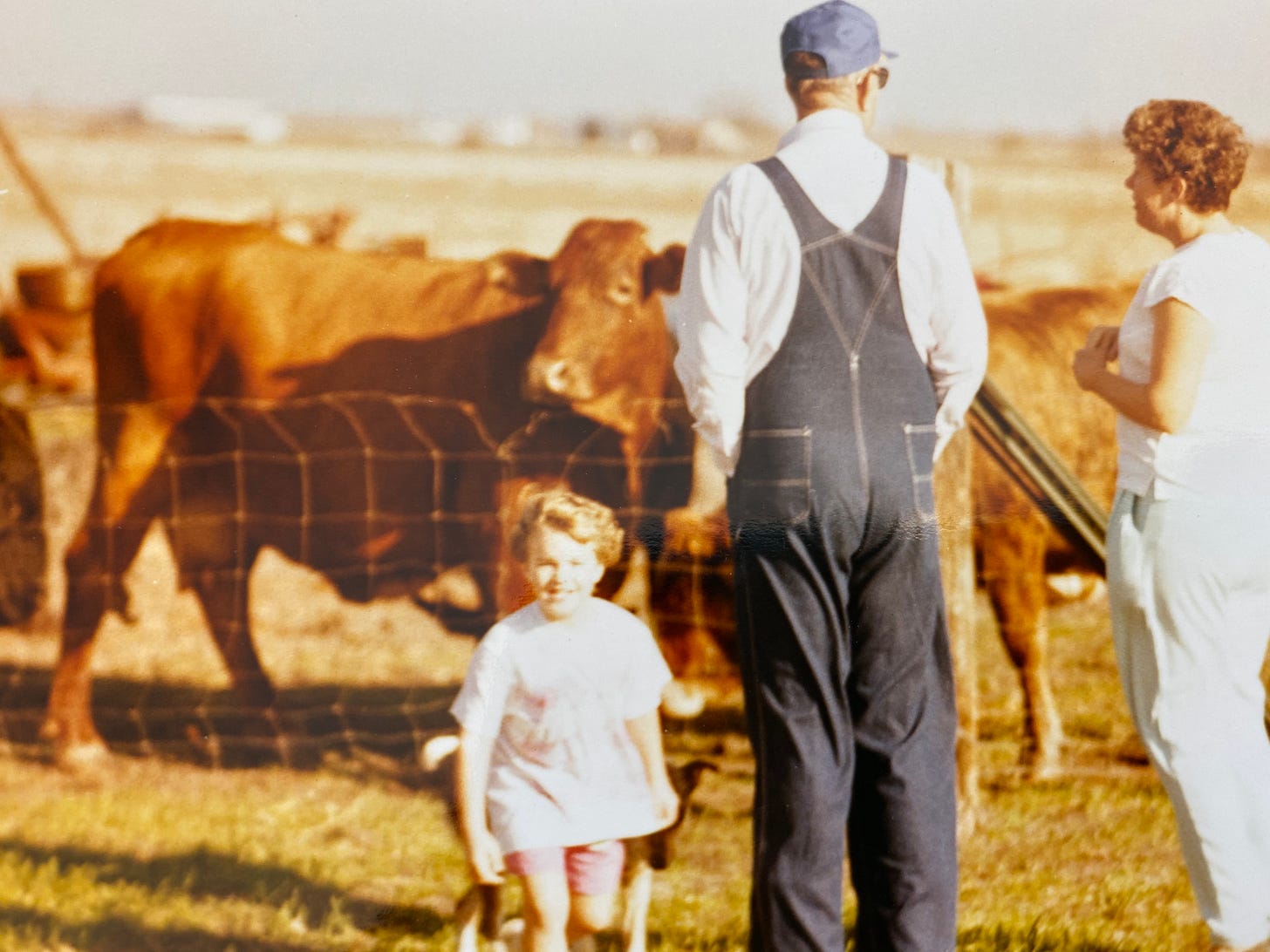10 weeks into writing the weekly Prime Future newsletter, I've been wrestling with the where-are-we-going-with-this questions like, who am I really writing for and why?
The bleeding-edge livestock producer?
The soon-to-be founder?
The seasoned entrepreneur?
The investor considering the space?
The biz dev lead sourcing M&A targets?
For the last 3 months I’ve been quarantining at the farm where I grew up, working from the farm office. In addition to bass fish, (the perfect Zoom frame) on the walls are plaques for award-winning corn yields in 1984, my grandparents, and in 1949, my great-grandparents. There’s a 1964 announcement as my granddad began to sell a brand new financial product: crop-hail insurance. There’s a 1946 photo of my granddad and his brothers showing pigs at the Fort Worth Stock Show. In the last 3 months we’ve talked a lot about the stories of resilience in the face of hard times….not surprisingly, most of those stories involve the cattle market!
As I sit in this office thinking about what animal protein value chains could look like in 10 or 20 years, while surrounded by a family history of people who’ve built a life and a living raising livestock while building families and communities, I’m reminded how personal this is.
Agriculture is deeply personal. It's personal for producers and for consumers.
And it's a business. A business that has changed dramatically over the last 50 years, especially the last 10. Consolidation, volatile markets, changing consumer preference, increasing global demand, and more. An industry comparable in value to plant agriculture - highly valuable yet largely ignored by tech.
My desire to shape the future of animal agriculture stems directly from my desire to insure there *IS* a future of animal agriculture.
…as someone who grew up on a farm.
…as someone who loves growth businesses and trajectory changing ideas.
….as someone who lives for a perfectly marbled Ribeye steak.
….as someone who knows firsthand how central livestock production is to rural communities.
For those of us who want to see a strong future for meat & poultry industries, here are three truths we must create:
In order for animal agriculture to have a future, meat & poultry has to be relevant to consumers.
In order for meat & poultry to remain relevant to consumers, we have to address The Big Issues like supply chain transparency, environmental impact & sustainability.
In order for new technologies to be relevant to livestock producers, they have to fit into the practicalities of current production systems and practices while proving a demonstrable ROI.
The challenge will be threading the needle to increase relevance of business-improving solutions for producers while increasing the relevance of meat and poultry for consumers.
It turns out, I’m writing Prime Future for anyone who shares an interest in accepting that challenge.
Your turn. Why do you care about the trajectory of animal agriculture?
Grab the Prime Future ebook (link)
Like what you’re reading? Get 46 additional editions of Prime Future to date in one PDF. From livestock genetics to new business models, get insight into trends and strategies across animal ag.



Government has always been involved with agriculture. The need for a great advocate for world demand for agriculture trade is needed since the passing of Richard Lugar. The relationships he formed with other countries has subsided and to the effect of farmers are slowly struggling.
Farming has two big black swans circling, one high and one low. The low one has EV written on it and will in a few years cripple the ethanol market. 40% of like 14 billion bu. of corn now goes for ethanol, what are farmers to do with that lost market? The other black swan has Impossible Meat written on it. It looks to me to be about equal to animal protein, and will really impact the livestock producers and grain growers. HOWEVER all is not lost if we look at a bit of history. 60 years ago saw the rise of supermarkets in our area. With that was the start of time and labor saving food products like TV dinners. Organic food and farmers markets of today are proof that many consumers want to "go back to the future." This is an opening for locally produced animal protein, but it cannot look like the old way to the consumer. A forward thinking Land Grant college of Animal Science and Marketing is needed to identify the economics of locally produced, slaughtered, and sold of animal meet near a sufficient sized metro area and help develop this model. Applying technology to this business model will be essential for its success. Here is an opportunity for future farmers because since farming today doesn't look like farming 60 years ago, then farming in 60 years will not look like farming today.